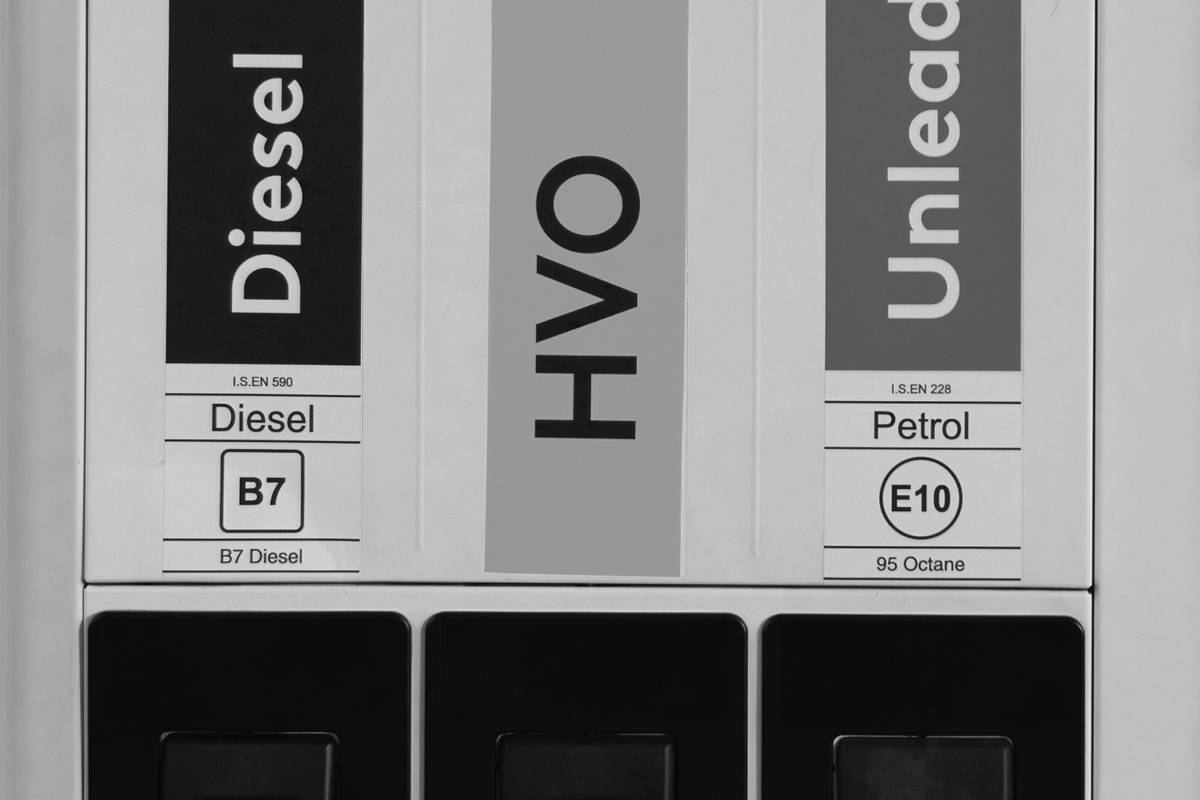
Definition x The Flint
Posted on May 11, 2024 by Samara Husbands
Looking for zero carbon production power
The Flint Forum recently gathered a panel of production energy experts to discuss the promise – and challenges – of running sets on zero-emissions energy. Founder Neal Romanek reports on the key takeaways
The most important sustainability choice we can make right now is to eliminate fossil fuels from our energy supply.
The use of plastics is bad, water pollution is bad, and biodiversity destruction is bad – but if you want to do one thing to make the biggest difference in the shortest amount of time, it’s cutting out all fossil fuels.
Kicking fossil fuels out of your life can be a challenge when you’re stuck with a power infrastructure you may not have a lot of control over.
If your premises are heated by methane (aka natural gas), you can make an investment into electric heating – if you’ve got it in the budget.
But if the electricity you have access to is generated by fossil fuels, you may have to focus on political change before you get infrastructure change.
If you’re working in production, however, you’re faced with plenty of opportunities for lowering your carbon emissions.
The complexity of film and TV shoots makes sustainability a challenging thing to manage, but it also means there are many points of access for sustainable practice.
How to dump diesel today
The Flint’s monthly webinar series, The Flint Forum, recently held a live panel discussion called ‘How to dump diesel: Preparing for zero emissions production’. The session brought together production power experts to brainstorm how projects can cut their emissions fast.
Guests were Adam Baker of zero- emissions battery company Green Voltage; Andrew Hutton of production battery mainstay Anton Bauer; Carly Hardy of location services provider Location One; and Rohan Mitchell of OB company EMG/Gravity Media.
The technology to do a fully zero-carbon emissions production is available right now. That much was made clear.
The barrier to removing carbon from all production power is budgetary – and the willingness to accept that sustainability is now the cost of doing business hasn’t quite sunk in where it needs to.
Any decarbonisation initiative on a production is a good thing. Literally every molecule of CO2 prevented from going into the atmosphere is a fraction of a degree in temperature that you’ve saved the planet from.
There are many uncertainties when it comes to sustainability, but the science has been clear on this since about 1896. CO2 in the air goes towards making the Earth permanently (as far as humans are concerned) warmer. We need to minimise such emissions at all costs.
HVO (hydrotreated vegetable oil) is a stop-gap fuel which can immediately replace diesel. Any diesel-powered generator, truck or submarine can start using HVO straight away.
HVO still generates energy through internal combustion, but the CO2 emissions produced are substantially lower – in some cases by up to 90% – than fossil fuel-based diesel. Outside broadcast specialist EMG was an early adopter of HVO, setting up its own 20,000-litre fuel bowser in 2021 to power its fleet of OB vehicles.
“A mindset change comes with it,” EMG’s Rohan Mitchell explained in The Flint Forum. “We used to say, ‘don’t bring the truck back empty because it needs to go out and do another job’. Now we say, ‘please bring it back empty so we can fill it with HVO’. That’s a very simple thing we can do, but now we ask ourselves: ‘What’s the next step?’”
EMG’s next move was acquiring a fully electric ten-tonne truck from Volvo last year. But the company is well aware that being a leader sometimes means having to wait for others to catch up.
“Logistically, we now have to plan to ensure it can always be fully charged. Unfortunately, the recharging infrastructure in the UK is not there on a commercial basis just yet. Give it five years, and we will see more. But we’re willing to take a chance on it and use our initiative. Then, we can look across the wider fleet and see how we can invest in non-combustion engines going forward.”
Not all HVO fuels are equal; to create HVO, you need to grow crops from which oil can be extracted and refined.
The worst offenders are palm oil plantations, which can annihilate natural habitats. Paired with climate change increasingly threatening food supplies, choosing between feeding machines and humans is not a desirable position for anyone.
HVO is a transition fuel; it’s to be used to allow the discontinuation of diesel immediately with the goal of replacement by zero-emissions technology as quickly as possible.
Zero-emissions options
Zero-carbon options are coming online quickly across industries. A number of companies are offering batteries as replacements for internal combustion generators on-set.
There are practical benefits to using battery power, beyond the environmental ones.
Batteries are essentially silent so can be run close to the action, as well as in noise-sensitive environments or neighbourhoods.
Zero emissions also means better working conditions for crew members – a gaffer working alongside diesel generators for an entire career is bound be at risk of health issues that aren’t a problem when it comes to batteries.
Most battery generators are lithium-based, in keeping with the dominant trend in the technology globally. But batteries’ chemistry is developing at a rapid pace.
Sodium batteries, like Anton Bauer’s new Salt-E Dog, leave behind the problems of lithium mining for plentiful, easily accessible sodium, and also have tremendous longevity.
A sodium battery can sit on a shelf for years and still be charged back up to full strength without any loss of its original capacity. Though the risk of fire in lithium batteries is fairly slim – assuming they’re undamaged and properly constructed – sodium batteries are chemically inert and not subject to the same fire safety protocols lithium batteries require.
Hydrogen too is entering the mix, although it brings with it some of the same issues as HVO – encouraging the continuation of internal combustion infrastructure, variable provenance and substantial investment in transport and storage.
Though currently in the testing and trial stage, some production specialists believe in it as a future power source for the media industry.
Adapting to a new power paradigm
The higher price on some of these technologies can still be somewhat off-putting to a few production accountants, though an investment in battery power saves money in the long run.
Prices are coming down as the market gets filled with a variety of competing options. In the short term, some productions may still find it challenging to transition fully to battery power.
“We are fortunate to work on some high-end productions,” Green Voltage’s Adam Baker told The Flint Forum, “and they do have budgets to do it. There can be a lot of focus on smaller productions that are more location-based and don’t possess the funds to invest in some greener technologies – they sometimes receive finger-pointing. It’s unfair and we should try to even that out. I know some platforms are attempting to make it more available with certain initiatives.”
But the greenest – and cheapest – way to power a set is not to use the power in the first place. Location One’s Carly Hardy thinks productions should be thinking about power as a finite resource to be cared for.
“We need to think about reducing consumption,” Hardy explained at The Forum. “I know it’s less sexy because it’s not around the new tech, but it’s critical if we want to spend the least amount of money on these new fuels, whether it’s batteries or hydrogen. We’re looking at generating electricity with our on-set trailers that are covered in solar panels.
“We’ve got the tech, but it’s how we embed it into our systems and the way we’re working. And systems are full of people. We’ve seen that some challenges are not around tech, but from people not liking change. But I’m feeling positive.”
This feature was first published in the May 2024 issue of Definition.

















